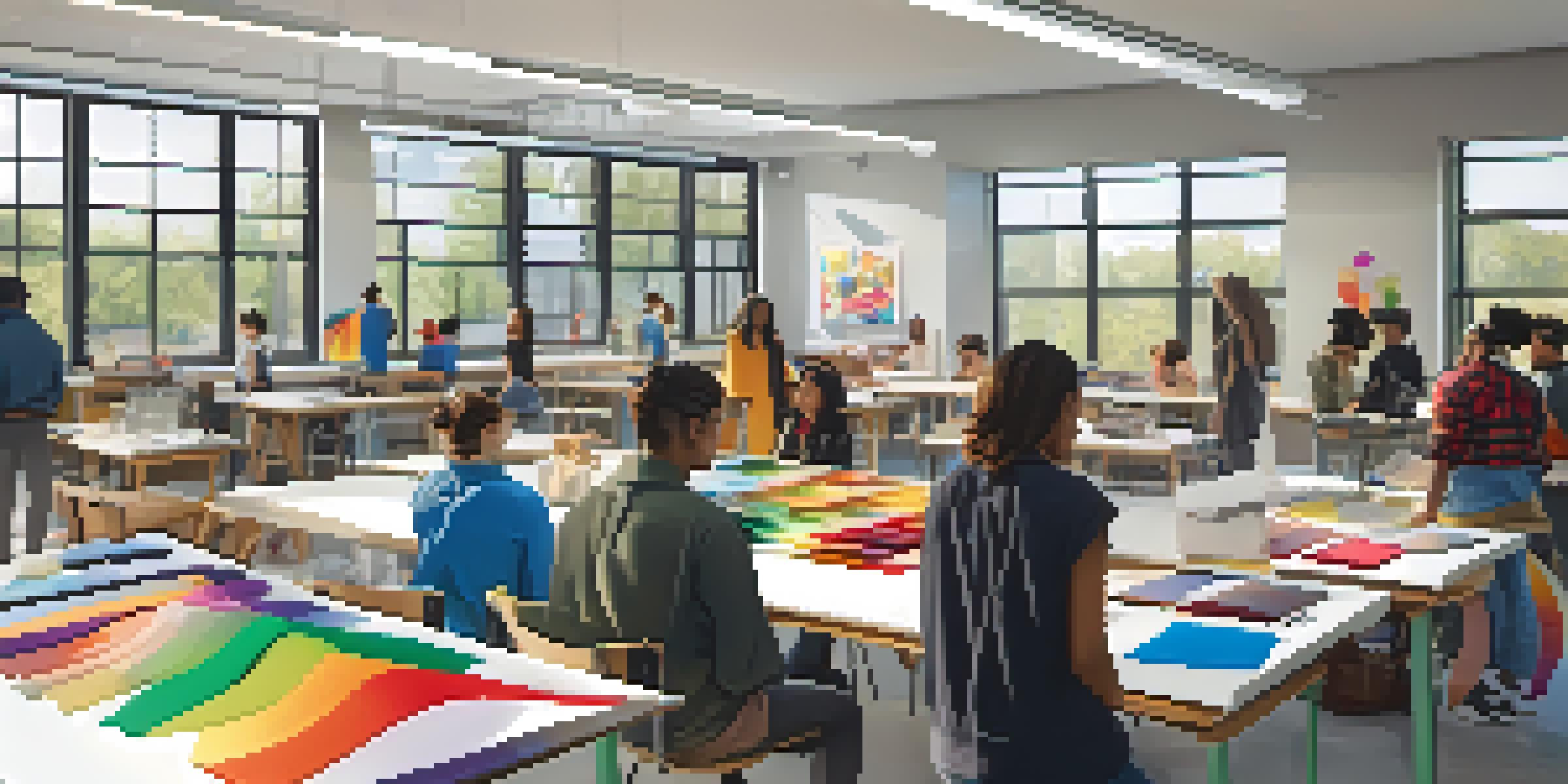Transforming Fashion Education: Adapting to Industry Changes

The Need for Evolution in Fashion Education
Fashion education has long been rooted in traditional methods, but the industry is rapidly changing. With the rise of technology and sustainability concerns, educational institutions must adapt to remain relevant. This evolution is crucial not only for students but also for the future of fashion itself.
Fashion is about dreaming and making other people dream. It’s about creativity, innovation, and a constant search for the new.
Gone are the days when fashion was solely about design and aesthetics. Today, students must be equipped with knowledge in digital tools, sustainable practices, and global market trends. Adapting to these changes ensures graduates can confidently step into a dynamic industry landscape.
Moreover, as fashion becomes more interconnected with various sectors like technology and sustainability, broadening the curriculum is essential. Institutions must embrace this shift to prepare students for the multifaceted challenges they will face in their careers.
Incorporating Technology into the Curriculum
Technology is transforming every aspect of fashion, from design software to online marketing strategies. Therefore, integrating tech-focused courses into fashion education is no longer optional; it's a necessity. Students should learn to use tools like 3D modeling, virtual reality, and e-commerce platforms to stay competitive.

For instance, fashion design students can benefit from learning CAD (Computer-Aided Design) software, which allows them to bring their ideas to life digitally before creating physical prototypes. This tech-savvy approach not only enhances creativity but also improves efficiency in the design process.
Evolving Fashion Education Methods
Fashion education must adapt to include technology and sustainability to prepare students for a changing industry.
Additionally, online platforms are reshaping how fashion brands connect with consumers. Educating students on digital marketing strategies and social media analytics prepares them to navigate and thrive in the modern marketplace.
Emphasizing Sustainability in Fashion Education
Sustainability has emerged as a critical focus in the fashion industry, driven by consumer demand and environmental concerns. Fashion education must reflect this shift by incorporating sustainable practices into the curriculum. This means teaching students about eco-friendly materials, ethical sourcing, and waste reduction strategies.
Sustainability is not a trend. It is a responsibility and an opportunity for the future of fashion.
For example, case studies on brands that prioritize sustainability can provide students with real-world insights. By analyzing successful sustainable practices, students can understand how to implement these strategies in their future careers.
Furthermore, encouraging hands-on projects that focus on upcycling and sustainable design fosters creativity while promoting environmental responsibility. This experiential learning approach equips students with the skills needed to innovate within a sustainable framework.
Fostering Collaboration with Industry Professionals
To bridge the gap between education and industry, fashion institutions must foster collaboration with industry professionals. This can take the form of guest lectures, mentorship programs, or internship opportunities, providing students with invaluable insights and experiences. By learning directly from those already in the field, students can gain a clearer understanding of current industry standards and practices.
For example, partnering with local fashion brands for collaborative projects can enrich students' learning experiences. Such partnerships allow students to work on real-world challenges, enhancing their problem-solving skills and preparing them for the workforce.
Importance of Industry Collaboration
Collaborating with industry professionals through mentorship and projects enriches student learning and keeps curricula relevant.
Moreover, these collaborations can help institutions stay updated on industry trends, ensuring their curriculum remains relevant. By continuously adapting to the needs of the market, fashion education can produce graduates who are ready to make an impact.
Encouraging Diverse Perspectives in Fashion Education
Diversity in fashion education is essential to fostering innovation and creativity. By embracing a wide range of perspectives, institutions can prepare students to create designs that resonate with diverse audiences. This inclusivity not only enriches the learning environment but also reflects the global nature of the fashion industry.
For instance, incorporating diverse cultural influences into design projects encourages students to think beyond traditional boundaries. This leads to more innovative and inclusive fashion designs that appeal to a broader demographic.
Additionally, promoting discussions around representation and inclusivity in fashion can inspire the next generation of designers. By addressing these important issues, fashion education can contribute to a more equitable industry.
The Role of Online Learning in Fashion Education
The emergence of online learning platforms has opened new doors for fashion education, making it more accessible than ever. Students can now access courses from top institutions worldwide, allowing for a more diverse learning experience. This flexibility enables individuals to tailor their education to fit their schedules and interests.
Moreover, online learning can incorporate interactive elements such as virtual workshops and collaborative projects. These features can enhance engagement and provide students with practical skills they can apply in real-world scenarios.
Global Market Awareness in Curriculum
Students need to understand global fashion trends and cultural differences to thrive in an interconnected market.
However, it's crucial for institutions to maintain high standards in online courses. By ensuring that online education reflects the same quality and rigor as in-person classes, fashion schools can uphold their reputation and effectiveness.
Preparing Students for a Global Fashion Market
In today's interconnected world, fashion students must be prepared to navigate a global market. This means understanding international trends, cultural differences, and global supply chains. Fashion education should provide students with the tools to think globally while designing locally.
For example, incorporating courses on global fashion markets and cultural studies can enhance students' awareness of various consumer behaviors and preferences. This knowledge is invaluable as they design collections aimed at diverse audiences.

Furthermore, fostering partnerships with international fashion schools can create opportunities for student exchanges. Such experiences can broaden students' horizons and enrich their understanding of the global fashion landscape.